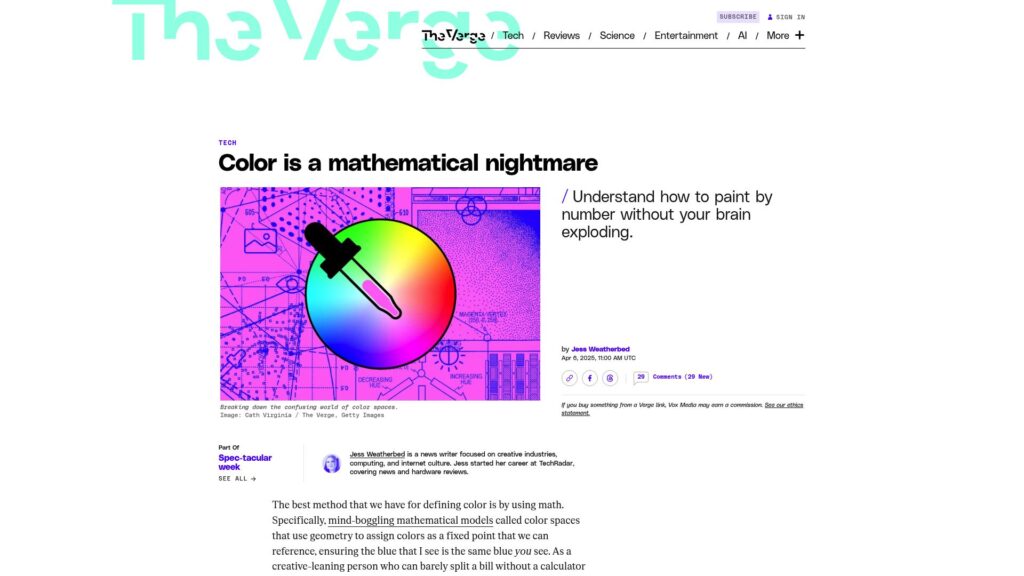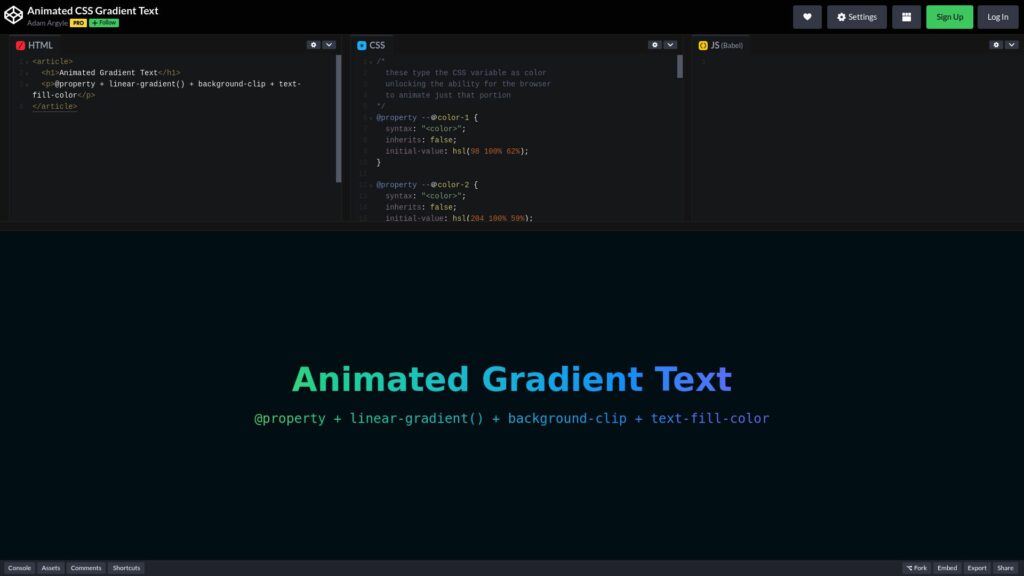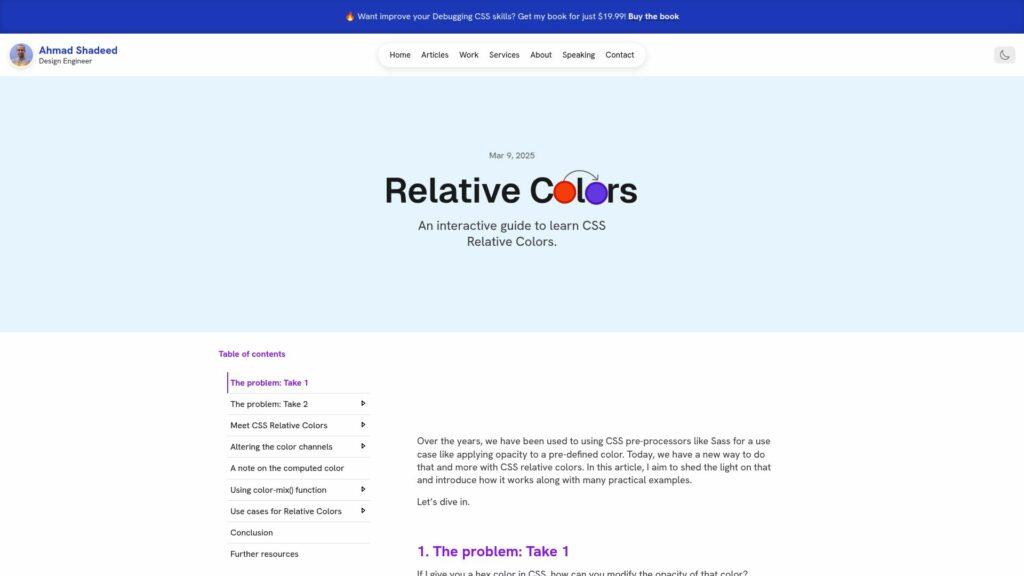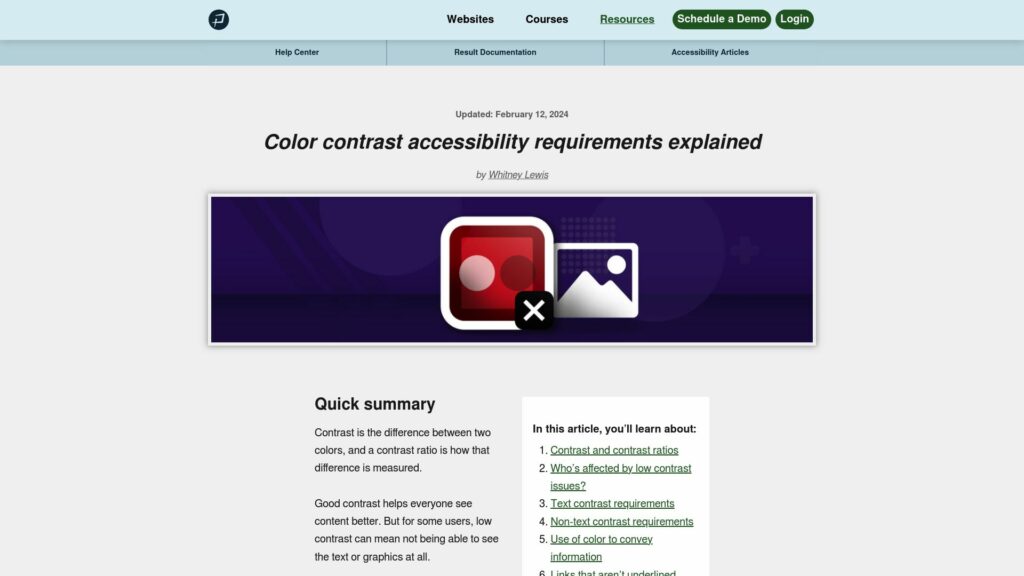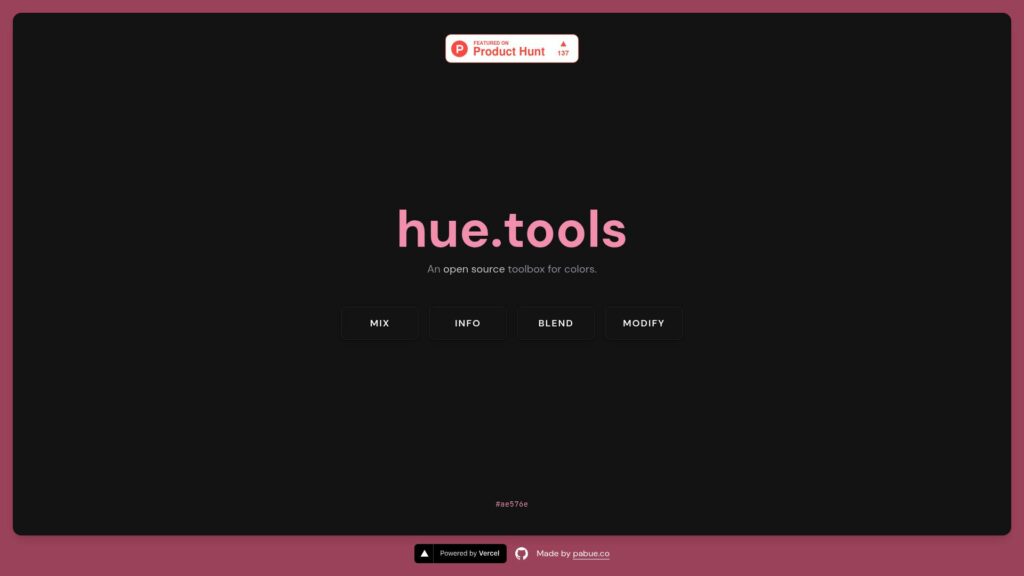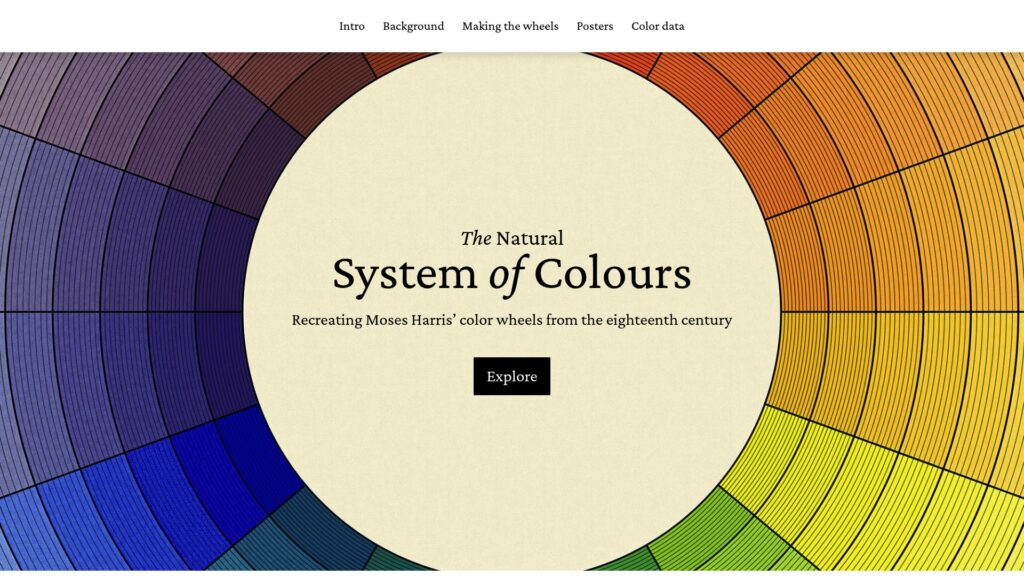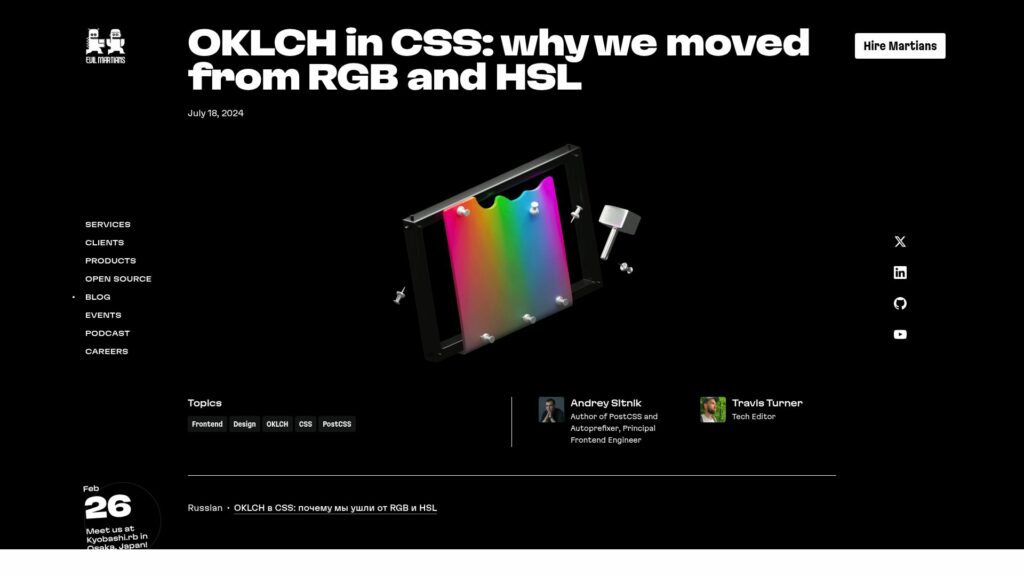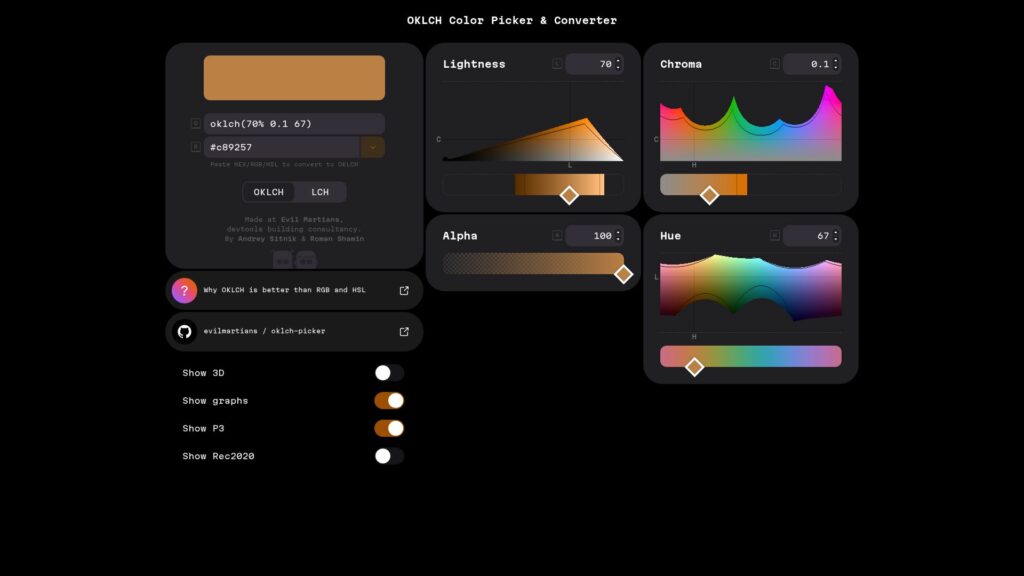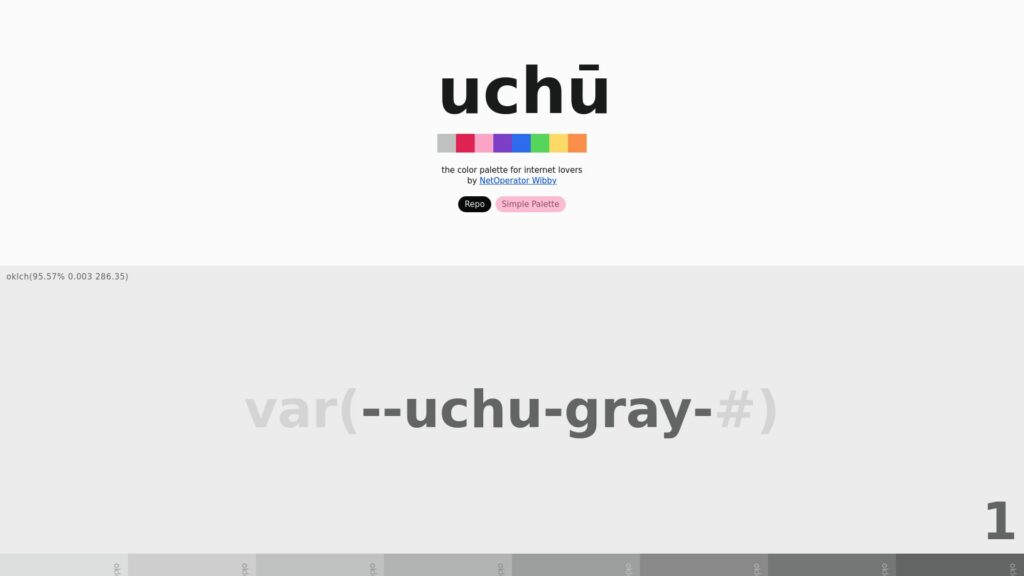Color Is a Mathematical Nightmare
Color representation involves complex mathematical models called color spaces that define how colors are perceived and displayed. Different models (CMYK, RGB, HSL) serve various purposes across digital and physical media, leading to confusion about which to use for specific tasks. Color spaces optimize color accuracy for applications like web design, photography, and printing. The concept of gamut measures the range of colors a device can display, which varies by technology. While understanding color models can aid in making informed choices for devices, most users can rely on software to handle complexity and appreciate the beauty of color in everyday life.
https://www.theverge.com/tech/643638/color-models-spaces-gamut-mathematical-nightmare
